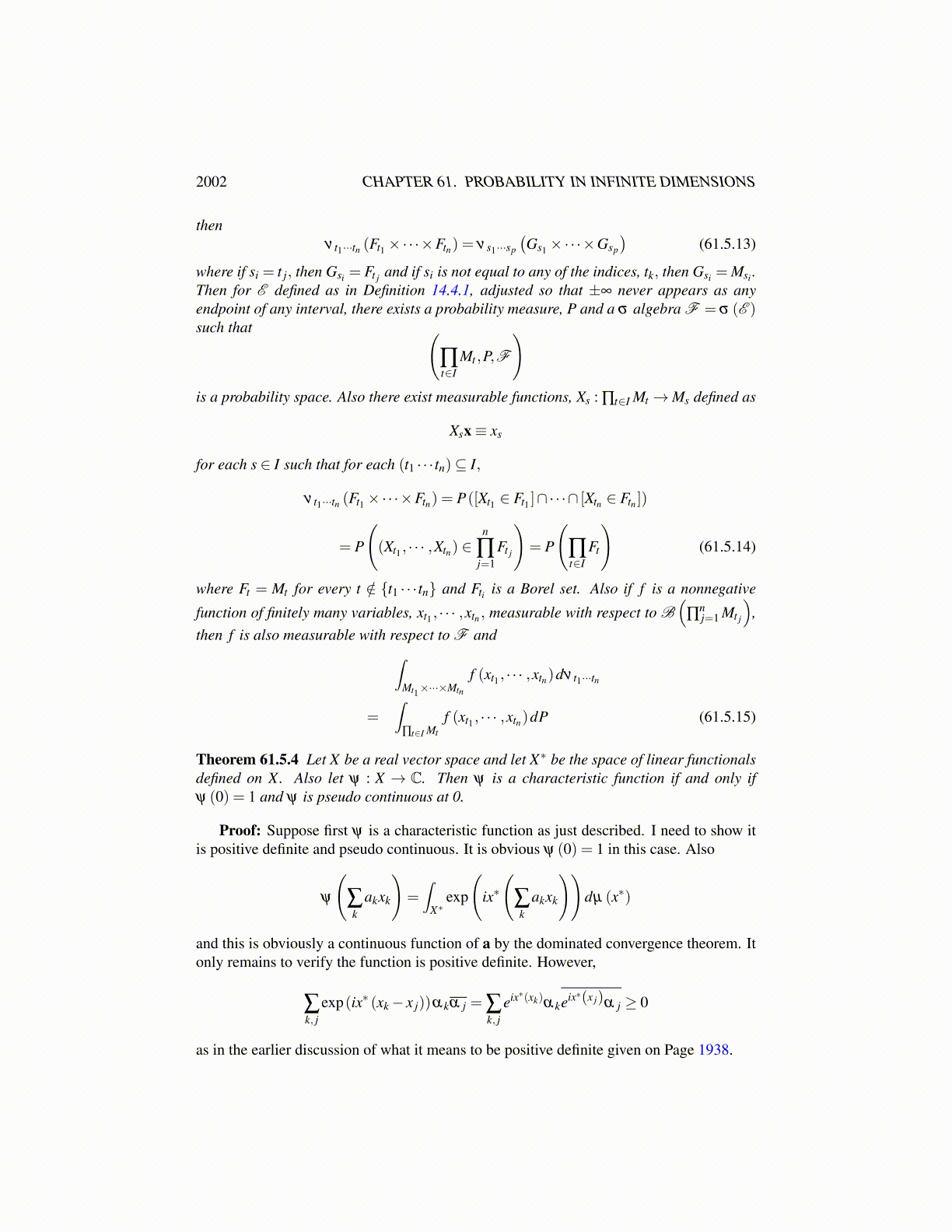
2002 CHAPTER 61. PROBABILITY IN INFINITE DIMENSIONS
it follows∪kHk =U.
Next consider the sets of Gk which have nonempty intersection with Hk,Hk. Then Hk iscovered by Hk and every set of Hk is contained in U, the sets of Hk also being disjoint.Then from 61.4.12,
m((Xν)
−1(∪Hk)
)= ∑
A∈Hk
m((Xν)
−1(A))
= ∑A∈Hk
ν (A) = ν (∪Hk) .
Therefore, letting k→ ∞ and passing to the limit in the above,
m((Xν)
−1(U))= ν (U) .
Since this holds for every open set, it is routine to verify using regularity that it holds forevery Borel set and so L (Xν) = ν as claimed.
61.5 Bochner’s Theorem In Infinite DimensionsLet X be a real vector space and let X∗ denote the space of real valued linear mappingsdefined on X . Then you can consider each x ∈ X as a linear transformation defined on X∗
by the convention x∗→ x∗ (x) . Now let Λ be a Hamel basis. For a description of what oneof these is, see Page 2728. It is just the usual notion of a basis. Thus every vector of X is afinite linear combination of vectors of Λ in a unique way.
Now consider RΛ the space of all mappings from Λ to R. In different notation, this isof the form
RΛ ≡∏y∈Λ
R
Since Λ is a Hamel basis, there exists a one to one and onto mapping, θ : X∗→RΛ definedas
θ (x∗)≡∏y∈Λ
x∗ (y) .
Now denote by σ (X) the smallest σ algebra of sets of X∗ such that each x is measurablewith respect to this σ algebra. Thus
{x∗ : x∗ (x) ∈ B} ∈ σ (X)
whenever B is a Borel set in R.Let E denote the algebra of disjoint unions of sets of RΛ of the form
∏y∈Λ
Ay
where Ay = R except for finitely many y.